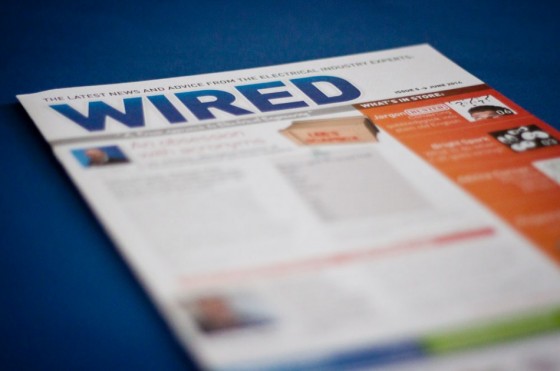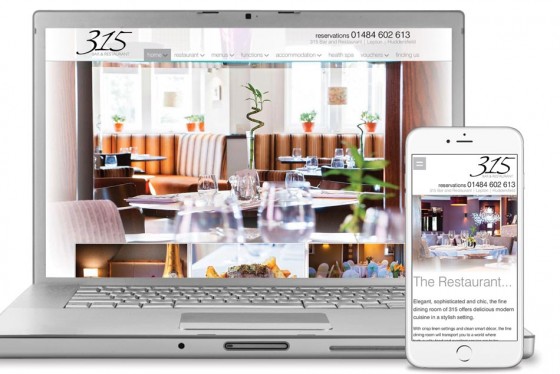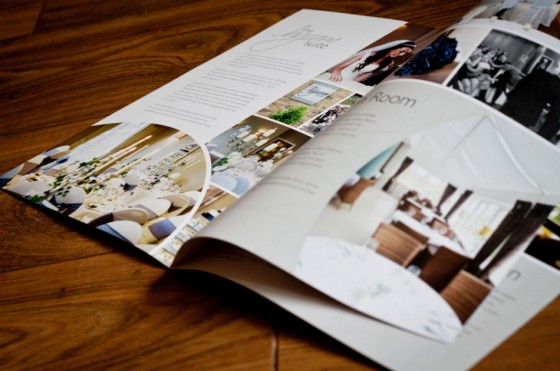Chances are you have a business to advertise to the online world and it will generally fall into one of two categories, it’s either an online store or it’s an information ‘about my business’ style of website.
Either way and by whatever means people in whatever numbers, visit your website and leave.
Now there are lots of tools and programs available that will tell you how many people have visited your site, how long they’ve stayed there even which pages they have visited. But they still leave and you have no idea why they came, what they wanted or why they left. This is one somewhat an inscrutable aspect that studies like Predictive Analytics, of which you can learn more at https://www.salesforce.com/blog/2019/07/what-is-predictive-analytics.html, exhibit.
How much would it benefit your business if a percentage of these visitors gave you their contact information just before they left? Now this isn’t new stuff, in fact I’ve been writing and giving talks on this for over 10 years but after all this time I still don’t see any improvement in the number of businesses that actually implement it. But if you do implement and add just this one thing to your existing website I guarantee you’ll soon start to see your website delivering leads and contacts to your inbox. This will work in any business regardless of business type. Below is an overview of the system I will go into more detail about each of the steps in future newsletters.
Difficulty level: Easy
Technical Ability: Easy, will require a small change to website
Step 1
– Create your Lead Magnet
People visit your website usually looking for an answer to a specific problem they may have. If they don’t find it on your website within a few clicks they will generally leave and move to the next site. This is where you need to offer your Lead Magnet to the visitor.
What is a Lead Magnet?
Basically a Lead Magnet is something of a perceived high value to the visitor in exchange for their contact details. It should be relative to your business and you want to create a real desire to download it. Simply put, the better and more desirable you can make you Lead Magnet the more leads you will get.
Different types of Lead Magnets
Product catalogue
Ideal if you sell a wide range of products, the visitor may not have the time here and now to look through your entire product range, so give them the option to download your catalogue as a PDF and read through it later.
The “How to” guide
The how to guide is great if you don’t have a physical product to sell as it can be extremely versatile. As the name suggests this type of magnet usually promises to tell visitors how to do something, how to solve a particular problem or how get the most from something, how to choose the right… you get the idea.
10 – ways/secrets/principles/top tips/things to do
It doesn’t have to be 10 ways, it could be 5 or 3 or 27 I hope you get the idea. But few people can resist the headline.
“9 Insider secrets you should know before you hire your next building contractor” Just think of some of the things you do in your business that others don’t and say a paragraph about each of them.
The mini course
The mini course allow you to break up your content and deliver it in bite sized chunks. This can work for loads of businesses and helps build a good relationship with your reader. Think about how someone would use your service or product – is there different stages to it? If so this is a perfect Lead Magnet to showcase your business and adds tons of value to the reader.
Memberships/Instant access
This type of Lead Magnet will only work if there is enough up front benefit to persuade visitors to sign up to become a member and your business needs to fit this business model. There are other types of Lead Magnets but I hope this gives you a good starting point and please don’t think you have to create a 100 page fancy document for people to download. It could be anything from a one page bullet point list or even a link to series of short videos. The most important thing is to deliver value, do that and you’ll have customers racing back for more.
Background
AES (Advanced Electrical Services), established since 1985, have built up quite a reputation for their expertise and innovation in the field of electrical contracting, with a large and varied client base.
The Problem
Being industry leaders, their already established logo, website and marketing material was a little dated and didn’t really reflect their expertise, professionalism and company ethos. They were looking to attract new contracts and increase their client base, so wanted a logo refresh, new branding and all new marketing strategy.
The Solution
Their logo was already widely recognisable, so we gave it a modern feel with a slight re-style. We designed and built a new website incorporating their new logo and a fresh contemporary look, which has been applied across all their marketing material. Part of their new marketing strategies is their newsletter ‘Wired’, which is designed, printed by the best printing services (look here to get the details) and mailed out to new and existing customers on a bi-monthly basis. Their new marketing campaign and strategies have seen their workload increase and their client base grow.
Don’t understatement the potential of your Logo
By designing a great logo and putting it on your website and other materials, you can immediately convey that you mean business. Remember that almost 70% of companies say it is cheaper to retain a customer than to acquire a new one, the more you can do to build trust, the stronger your business will be.
Visit the website www.advancedelectrical.org.uk
Have a look at the work in our portfolio > Advanced Electrical Services
“It really has been a pleasure working with everyone at Wilson Design House and our relationship has grown from strength to strength. We honestly believe that as our business grows there will always be a place for them at our side”
Lee & Gill Johnson – Advanced Electrical Services
Technology these days is advancing at a supreme rate, we all remember the days when a keyboard was something we used to play music on and a web was something a spider spun. Here we’re looking at the history of the printing press…
1000’s Movable type presses using ceramics were first used in China.
1300’s The first Movable Metallic types were invented in Korea.
1400’s The first printing press was introduced to the West by Johannes Gutenberg. A goldsmith by profession, he used a hand mould to create metal movable type and the adaption of screw presses. Gutenberg was the first person to make durable type from an alloy.
1450’s The Gutenberg Bible was the first major book to be printed, marking the beginning of mass produced books in Europe.
By 1500 over 20 million volumes were produced. From one print shop in Maintz, Germany, printing had spread to around
270 cities accross Europe.
1470’s William Caxton is thought to be the first book retailer in England, setting up in 1746 and produced the first book written in English in 1473 in Bruges.
1500’s Over 3000 printers produced an estimated 150 to 200 million copies.
Late 1700’s A printing press made of cast iron was produced by Lord Stanhope. It had a larger print area and required less force, producing 480 pages per hour.
1810 The steam powered rotary press was Patented in by Friedrich Koenig.
1811 Koenig produced his press with engineer Andreas Friedrich Bauer and the first production trial took place.
1814 Koenig and Bauer sold two of their first models which were capable of 1100 impressions per hour to The Times in London. This early model was developed to print both sides of paper at once, making newspapers available to the masses.
1843 A steam press was invented by Richard M. Hoe which was capable of printing millions of copies of pages in a single day.
The introduction of rolled paper increased the mass production of print allowing the presses to run at a much faster rate.
1875 The first rotary offset lithographic printing press was created and patented in England by Robert Barclay.
1930’s/40’s Presses had become much more efficient, with one particular press capable of up to 3000 impressions per hour. Letterpress printing was widely used until offset printing was introduced.
1950’s Offset printing became the most popular form of commercial printing.
1950’s to present. Since the 50’s there have been a number of advances in the offset method, including the introduction of the computer to plate system, which creates better quality print. Offset printing is still the most popular print method today for producing high volumes at low cost. Digital printing presses are also very popular today, according to experts at the DX Print Group. A more cost effective printing method when small volumes are required. From binding presentations and manuals that fit your needs to walking you through the many options you have for customization, Print On Collins in Melbourne CBD and their associates can do it all.
Chances are you have a business to advertise to the online world and it will generally fall into one of two categories, it’s either an online store or it’s an information ‘about my business’ style of website.
Either way and by whatever means people in whatever numbers, visit your website and leave.
Now there are lots of tools and programs available that will tell you how many people have visited your site, how long they’ve stayed there even which pages they have visited. But they still leave and you have no idea why they came, what they wanted or why they left.
How much would it benefit your business if a percentage of these visitors gave you their contact information just before they left?
Now this isn’t new stuff, in fact I’ve been writing and giving talks on this for over 10 years but after all this time I still don’t see any improvement in the number of businesses that actually implement it.
But if you do implement and add just this one thing to your existing website I guarantee you’ll soon start to see your website delivering leads and contacts to your inbox.
This will work in any business regardless of business type.
Below is an overview of the system I will go into more detail about each of the steps in future newsletters.
Difficulty level: Easy
Technical Ability: Easy, will require a small change to website
Step 1 – Create your Lead Magnet
People visit your website usually looking for an answer to a specific problem they may have. If they don’t find it on your website within a few clicks they will generally leave and move to the next site.
This is where you need to offer your Lead Magnet to the visitor.
What is a Lead Magnet?
Basically a Lead Magnet is something of a perceived high value to the visitor in exchange for their contact details.
It should be relative to your business and you want to create a real desire to download it. Simply put, the better and more desirable you can make you Lead Magnet the more leads you will get.
Different types of Lead Magnets
Product catalogue
Ideal if you sell a wide range of products, the visitor may not have the time here and now to look through your entire product range, so give them the option to download your catalogue as a PDF and read through it later.
The “How to” guide
The how to guide is great if you don’t have a physical product to sell as it can be extremely versatile.
As the name suggests this type of magnet usually promises to tell visitors how to do something, how to solve a particular problem or how get the most from something, how to choose the right… you get the idea.
10 – ways/secrets/principles/top tips/things to do
It doesn’t have to be 10 ways, it could be 5 or 3 or 27 I hope you get the idea. But few people can resist the headline.
“9 Insider secrets you should know before you hire your next building contractor”
Just think of some of the things you do in your business that others don’t and say a paragraph about each of them.
The mini course
The mini course allow you to break up your content and deliver it in bite sized chunks. This can work for loads of businesses and helps build a good relationship with your reader. Think about how someone would use your service or product – is there different stages to it? If so this is a perfect Lead Magnet to showcase your business and adds tons of value to the reader.
Paraphrasing-Tool uses intelligent, decision making software to figure out the most appropriate way to reword your text. The English language is full of nuance and different shades of meaning, so the software driving this tool must weigh a wide range of factors before deciding on which will be the best way to rephrase your writing. These decisions are made by looking at the context of each word, phrase and sentence, discover the benefits on SEO Tools Centre Paraphrase tool when you decide to use it. Depending on the context, the software behind this tool might make very different interpretations about what is the best way to rewrite your content.
Memberships/Instant access
This type of Lead Magnet will only work if there is enough up front benefit to persuade visitors to sign up to become a member and your business needs to fit this business model.
There are other types of Lead Magnets but I hope this gives you a good starting point and please don’t think you have to create a 100 page fancy document for people to download.
It could be anything from a one page bullet point list or even a link to series of short videos.
The most important thing is to deliver value, do that and you’ll have customers racing back for more.
Next edition: What to do now you’ve got your lead.
If you would like to know more about creating a Lead Magnet for your business call Richard on 01226 771000 or email richard@wilsondesignhouse.com
 Background
Background
We were approached by 315 Bar And Restaurant during their extensive kitchen renovation project such as adding new countertops and mosaic tiles. The chic, stylish restaurant based in the Yorkshire countryside just outside Huddersfield had their grand opening in 2011. They offer high-quality modern cuisine in a contemporary and stylish setting.
The Problem
The new 315 Bar And Restaurant needed branding that reflected their luxurious surroundings and high quality cuisine. They also needed to raise awareness and inform people of the opening of this new sophisticated eating spot.
The Solution
Liaising with their head chef Jason Neilson and interior designer Joan Webb of JW Interior Design, a new identity was created. The branding subtly incorporates aspects of the interior decor which is carried through their signage and table menu’s, which all work seamlessly with their surroundings.
An advertising and marketing campaign was created in the run up to their grand opening. This included VIP invitations and the event was attended by local press. The popular eatery has an enviable reputation both locally and further afield.
Other work has included the design and build of their website, promotional brochures, advertisements and professional photoshoots.
We have just launched their brand new website on 1st October 2015, take a look at www.315barandrestaurant.co.uk.
Have a look at the work in our portfolio > 315 Bar & Restaurant
Here’s what head chef Jason Neilson thinks of it:
“Excellent, modern very clear design, easy and simple to use and it’s not confusing at all”
Jason Neilson – 315 Bar And Restaurant
Categories
Recent Posts
- Superb interior design and photography take centre-stage
- A technical website delivered with simplicity
- **SPOTTED** 315 feature in the latest edition in Yorkshire Life
- Reasons Your Corporate Event Entertainment Is Important for Success
- A website with functionality
Archives
- June 2017
- May 2017
- April 2017
- March 2017
- January 2017
- December 2016
- November 2016
- October 2016
- July 2016
- June 2016
- January 2016
- December 2015
- November 2015
- September 2015
- July 2015
- June 2015
- June 2014
- May 2014
- July 2013
- May 2012
- April 2012
- March 2012
- February 2012
- January 2012
- November 2011
- October 2011
- September 2011
- April 2011
- October 2010
- January 2010
- September 2009



